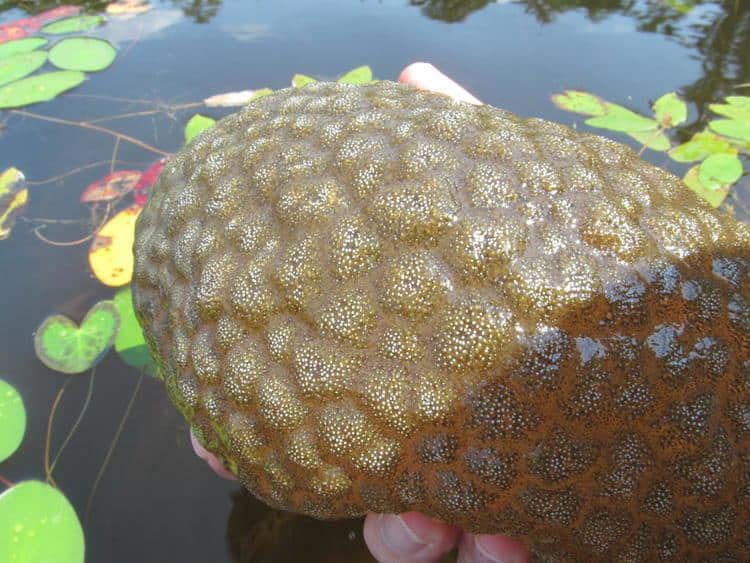Dear Lyn,
I was out working on my pier the other day when I came across this big, strange gelatinous lump attached to a stick under the pier. I’m not sure if it’s some kind of egg pod or what — but it’s really, really disturbing to me. Is it alive?! Should I contact someone to remove it? Should I keep the dog and the kids out of the lake? Lyn, I’m really freaked out about this creepy, slimy alien egg pod-looking thing. Help!
Signed, Frightened Francesca
Dear Frightened Francesca:
Francesca, do not be alarmed! What you’ve been lucky enough to discover is a Freshwater Bryozoan! Bryozoa, also commonly referred to as moss animals, are really a sedentary colony of living invertebrate organism (zooids). They are filter feeding creatures, usually attaching their colony to submerged sticks, that live in warm freshwater ponds, lakes, streams and rivers. They prefer quiet, protected areas where they can grow and thrive. Their colony can range in size from roughly a golf ball to a basketball.
Bryozoa could be rather unsettling to look at if you don’t know what they are, but they are truly extraordinary creatures that tell us some great things about their environment! In fact, their presence indicates that the water they are living in is clean and healthy. Each colony is comprised of thousands of tiny individual creatures, all filtering the water for food particles they need to survive. The colony is held together by a gelatinous, blobby-looking substance called zooecium. The zooecium keeps the colony held together and provides some protection for the Bryozoa.
Neither Bryozoa, nor the zooecium that surrounds them, are harmful to us, to fish or other animals. On the contrary, it would be considerate of us to protect them and keep children and pets away from them so that they can continue filtering the water as nature intended. As we near the winter, they will leave behind tiny egg sacs called statoblasts that will help foster new colonies the following summer. The statoblasts are hearty enough that they can withstand poor conditions for quite some time and then emerge when conditions are again favorable to their survival.
Special Note: If any of our readers find a Bryozoa this fall, please carefully take a photo and send it to us via email at lyn@watershedfoundation.org
